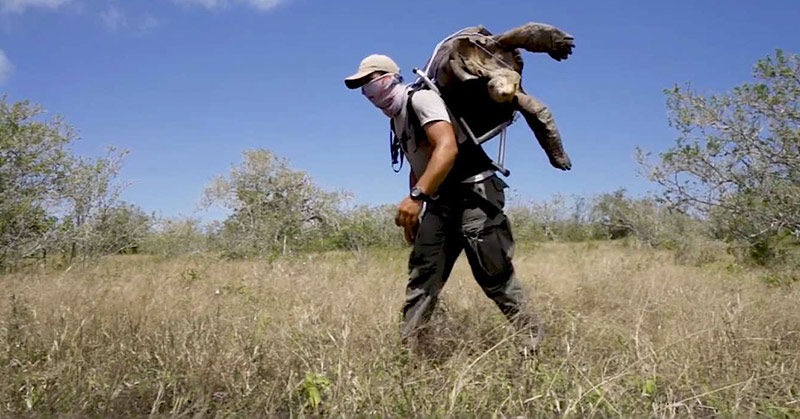After 55 years spent away from home, these giant tortoises have finally made their triumphant return back to their home on the Galapagos Islands. Their survival as a species is all thanks to one of the world’s most successful captive breeding programs.
Giant Tortoises Return to Española Island
In the mid-1960s, the giant Española tortoise was close to extinction. Hundreds of the species were gathered up to be used as food by passing mariners in the late 1800s. These people also introduced invasive species to the island like goats, which further affected the giant tortoises’ ability to thrive in their homeland. (1, 2)
By the mid-1960s there were only 14 Española tortoises left on the island. To save them from certain extinction, they were gathered up and taken to a special sanctuary. The goal was to breed the giant tortoises safely in order to bolster the population and then return the giant tortoises back to their home. (1, 2)
On June 15th, 2020, that goal was finally reached. With the goats having been eradicated from the island by 1978 and the population now at 2,300, the giant Española tortoises were finally able to go home. (1, 2)
“This captive breeding program, in addition to the management actions implemented on Española island, give us peace of mind that we managed to save a species that would otherwise have become extinct. It can only be described as successful and an example of the conservation efforts that we implement as a National Government in synergy with our allies,” said Paulo Proaño, Ecuador’s Minister of Environment and Water. (1, 2)
Read: Everything you need to know about the glowing Sea Turtle
Diego the Tortoise
At the start of the program back in the sixties, the Galapagos Conservancy performed a worldwide search to see if there were any other Española tortoises around the planet other than the 14 from the island. Finding other tortoises, particularly males, would be extremely beneficial to the survival of the species. These other Española tortoises would contribute to the genetic variability of the tortoises, which strengthens genetics and makes them less vulnerable to disease and illness. (1, 2)
Their search found one: an 80-year-old tortoise at the San Diego Zoo. He had been brought to the San Diego Zoo by a research team in the 1930s. Dubbed “Diego” for the Zoo he came from, he was also brought in to participate in the program. (1, 2)
Now 100 years old, Diego is now responsible for roughly 40% of the giant tortoises now living on the island. He was also brought back to live his remaining decades of life in his home. (1, 2)
The Incredible Journey Home
Originally planned for March but delayed due to the coronavirus shutdowns, the giant tortoises finally made the trip home in June. They were brought to Española in boats, then strapped to the backs of biologists, who carried them inland to an area with plenty of cacti for them to eat. (1, 2)
This was no easy feat – each tortoise weighs around 77 pounds, with some weighing more than 120 pounds. For the heavier tortoises, biologists went in teams of two in a relay-style transport. Once all the tortoises were brought in, the biologists stayed to observe the tortoises for four more hours before leaving them to themselves. (1, 2)
How You Can Help
The Galapagos Islands are incredibly rich in diverse and unique species that are vital to the planet’s ecosystems. Unfortunately, many of them are at risk. Visit The Galapagos Conservancy website to learn more about how you can help support their different initiatives.
Read: A Century Later, Baby Tortoises Have Been Discovered Thriving On the Galapagos Island of Pinzon

